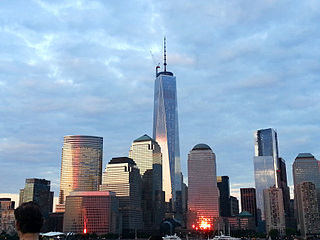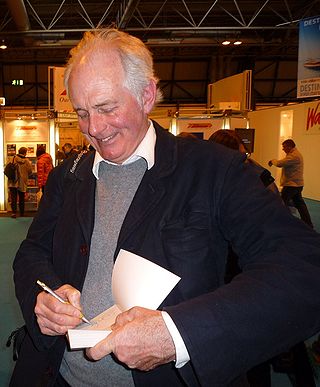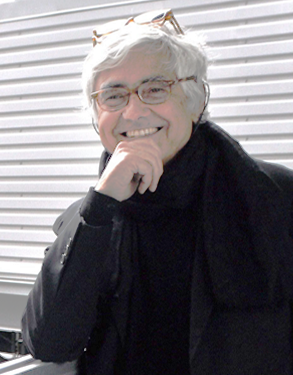
The Pritzker Architecture Prize is an international architecture award presented annually "to honor a living architect or architects whose built work demonstrates a combination of those qualities of talent, vision and commitment, which has produced consistent and significant contributions to humanity and the built environment through the art of architecture.” Founded in 1979 by Jay A. Pritzker and his wife Cindy, the award is funded by the Pritzker family and sponsored by the Hyatt Foundation. It is considered to be one of the world's premier architecture prizes, and is often referred to as the Nobel Prize of architecture.

The World Trade Center site, often referred to as "Ground Zero" or "the Pile" immediately after the September 11 attacks, is a 14.6-acre (5.9 ha) area in Lower Manhattan in New York City. The site is bounded by Vesey Street to the north, the West Side Highway to the west, Liberty Street to the south, and Church Street to the east. The Port Authority of New York and New Jersey (PANYNJ) owns the site's land. The original World Trade Center complex stood on the site until it was destroyed in the September 11 attacks.

The Guggenheim Museum Bilbao is a museum of modern and contemporary art designed by Canadian-American architect Frank Gehry, and located in Bilbao, Basque Country, Spain. The museum was inaugurated on 18 October 1997 by King Juan Carlos I of Spain, with an exhibition of 250 contemporary works of art. Built alongside the Nervion River, which runs through the city of Bilbao to the Cantabrian Sea, it is one of several museums belonging to the Solomon R. Guggenheim Foundation and features permanent and visiting exhibits of works by Spanish and international artists. It is one of the largest museums in Spain.

Daniel Libeskind is a Polish–American architect, artist, professor and set designer. Libeskind founded Studio Daniel Libeskind in 1989 with his wife, Nina, and is its principal design architect.

Memory Foundations is the name given by Daniel Libeskind to his site plan for the World Trade Center, which was originally selected by the Lower Manhattan Development Corporation (LMDC) to be the master plan for rebuilding at the World Trade Center site in New York City in February 2003.

The Jewish Museum Berlin was opened in 2001 and is the largest Jewish museum in Europe. On 3,500 square metres of floor space, the museum presents the history of Jews in Germany from the Middle Ages to the present day, with new focuses and new scenography. It consists of three buildings, two of which are new additions specifically built for the museum by architect Daniel Libeskind. German-Jewish history is documented in the collections, the library and the archive, and is reflected in the museum's program of events.

Herbert Mitchell Muschamp was an American architecture critic.

Daniel Gordon Raffan Cruickshank is a British art historian and BBC television presenter, with a special interest in the history of architecture.
Starchitect is a portmanteau used to describe architects whose celebrity and critical acclaim have transformed them into idols of the architecture world and may even have given them some degree of fame among the general public. Celebrity status is generally associated with avant-gardist novelty. Developers around the world have proven eager to sign up "top talent" (i.e., starchitects) in hopes of convincing reluctant municipalities to approve large developments, of obtaining financing or of increasing the value of their buildings. A key characteristic is that the starchitecture is almost always "iconic" and highly visible within the site or context. As the status is dependent on current visibility in the media, fading media status implies that architects lose "starchitect" status—hence a list can be drawn up of former "starchitects".

Paul Goldberger is an American author, architecture critic and lecturer. He is known for his "Sky Line" column in The New Yorker.
The World Trade Center Site Memorial Competition was an open, international memorial contest, initiated by the Lower Manhattan Development Corporation (LMDC) according to the specifications of the architect Daniel Libeskind, to design a memorial for the World Trade Center site at the under-construction World Trade Center in New York City. The competition began April 28, 2003 and the winner—Michael Arad and Peter Walker's Reflecting Absence—was revealed January 14, 2004, in a press conference at Federal Hall National Memorial. The contest garnered 5,201 entries from 63 nations and 49 U.S. states, out of 13,683 registrants from all 50 U.S. states and 94 nations, making it the largest design competition in history.

Contemporary architecture is the architecture of the 21st century. No single style is dominant. Contemporary architects work in several different styles, from postmodernism, high-tech architecture and new interpretations of traditional architecture to highly conceptual forms and designs, resembling sculpture on an enormous scale. Some of these styles and approaches make use of very advanced technology and modern building materials, such as tube structures which allow construction of buildings that are taller, lighter and stronger than those in the 20th century, while others prioritize the use of natural and ecological materials like stone, wood and lime. One technology that is common to all forms of contemporary architecture is the use of new techniques of computer-aided design, which allow buildings to be designed and modeled on computers in three dimensions, and constructed with more precision and speed.
The year 2008 in architecture involved some significant architectural events and new buildings.
The THINK Team was a team that consisted of architects, landscape architects, engineers, interactive designers and others who developed several designs for the Lower Manhattan Development Corporation's "Innovative Design Study" that was created in order to involve the public in a creative process to redevelop the World Trade Center site in New York City, after it was destroyed in the September 11, 2001 terrorist attacks.

Cecil Balmond OBE is a Sri Lankan–British designer, artist, and writer. In 1968 Balmond joined Ove Arup & Partners, leading him to become deputy chairman. In 2000 he founded design and research group, the AGU.

Rafael Viñoly Beceiro was an Uruguayan-born architect based in New York. He was the principal of Rafael Viñoly Architects, which he founded in 1983. The firm has offices in New York City, Palo Alto, London, Manchester, Abu Dhabi, and Buenos Aires. Viñoly designed landmark buildings internationally.

The LVMH Tower is a 24-story skyscraper on 57th Street, near Madison Avenue, in Midtown Manhattan, New York City. Designed by Christian de Portzamparc, the building opened in 1999 as the overseas headquarters of Paris-based LVMH Moët Hennessy Louis Vuitton SE. The building has received widespread praise from architecture critics.

The Twin Towers II was a proposed twin-towered skyscraper complex which would have been located at the World Trade Center site in Manhattan, New York City. The proposed complex would have replaced the former Twin Towers of the World Trade Center destroyed in the September 11 attacks, restoring the skyline of the city to its former state. The main design for the proposed complex would feature new landmark twin towers, nearly identical to the originals designed by Minoru Yamasaki, though it would feature 115 stories—5 floors taller than the originals, among other differences. Beside the towers, an above-ground memorial would have occupied the footprints of the original towers. The new site would also have featured three 12-story buildings, replacing the original 3, 4 and 5 World Trade Center. The complex was designed and developed by American architect Herbert Belton and American engineer Kenneth Gardner, and sponsored by Donald Trump.

The World Trade Center (WTC) is a mostly completed complex of buildings in the Lower Manhattan neighborhood of New York City, U.S., replacing the original seven buildings on the same site that were destroyed in the September 11 attacks. The site is being rebuilt with up to six new skyscrapers, four of which have been completed; a memorial and museum to those killed in the attacks; the elevated Liberty Park adjacent to the site, containing the St. Nicholas Greek Orthodox Church and the Vehicular Security Center; and a transportation hub. The 104-story One World Trade Center, the tallest building in the Western Hemisphere, is the lead building for the new complex.